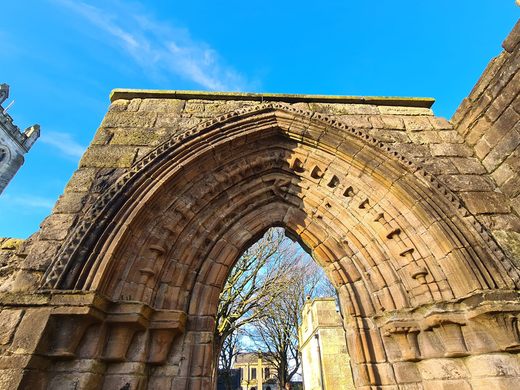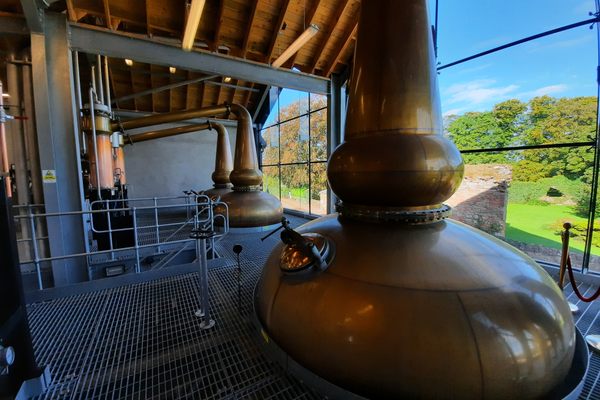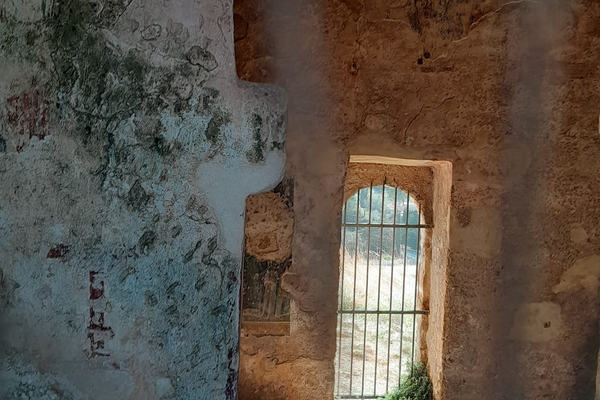AO Edited
Kilwinning Abbey
Now in ruins, this abbey was the home of Tironensian monks for more than 400 years.
Kilwinning Abbey was a Tironensian Benedictine monastic community whose magnificent ruins sit in the centre of Kilwinning town. The Tironensian order took its name from Tiron in the diocese of Chartres.
Kilwinning means “the church of Winnin” and the abbey was dedicated to Saint Winning and the Virgin Mary. Traditional holds that St Winnin was a holy man who first set up a church here in the 700s, while the abbey was established later sometime between 1162 and 1168 with monks from Kelso Abbey. The only parts surviving from the earlier church are parts of a carved stone cross dating to about 900 which is stored in the North Ayrshire Heritage Centre at Saltcoats.
Because Kilwinning was not founded by a monarch, its beginning was less grand than regally-founded abbeys. This is made clear in the remaining ruins where frequent changes in the masonry types show that the abbey was built over several different operations. Despite this, some still refer to Kilwinning as one of Scotland’s grandest abbeys.
One of the most unusual features of Kilwinning was its towers, of which there were three. One, conventionally, stood over the crossing between the nave, choir, and transepts, while the other two stood at the western corners of the nave. The northwest bell tower collapsed in 1814 and was replaced with the present clock tower.
The Earls of Glencairn and Angus plundered the abbey in 1513, and then in the 1540s, George Wishart’s supporters caused further damage. In 1559, the Earl of Glencairn led a further raid on the abbey when many of the books, vestments, and pictures were removed and burned. The Earl of Glencairn returned in 1562 and again assaulted the abbey, this time instigated by John Knox and the Scottish Protestant Reformation, at this time it is said that the stained glass was broken, ornamental tombs were broken up and some graves were dug up.
By 1592 the abbey sat in ruins, although the nave was repaired and used as the parish kirk until 1775 when the new one was constructed. This church was built within the boundary of the old abbey and sits over the site of the old choir and presbytery.
The best-persevered parts of the abbey are its magnificent south transept, dedicated to the Virgin Mary, the south nave wall which includes the east processional doorway, and part of the west front.
Know Before You Go
Park in one of the town's car parks and walk to the abbey.






















Follow us on Twitter to get the latest on the world's hidden wonders.
Like us on Facebook to get the latest on the world's hidden wonders.
Follow us on Twitter Like us on Facebook